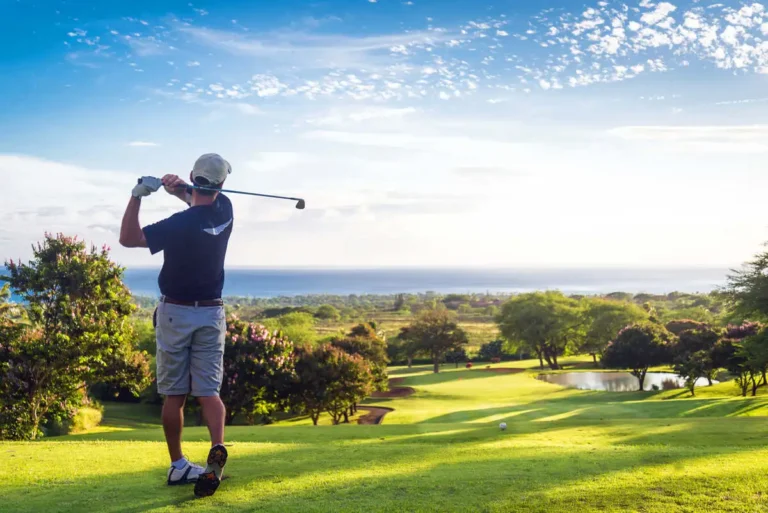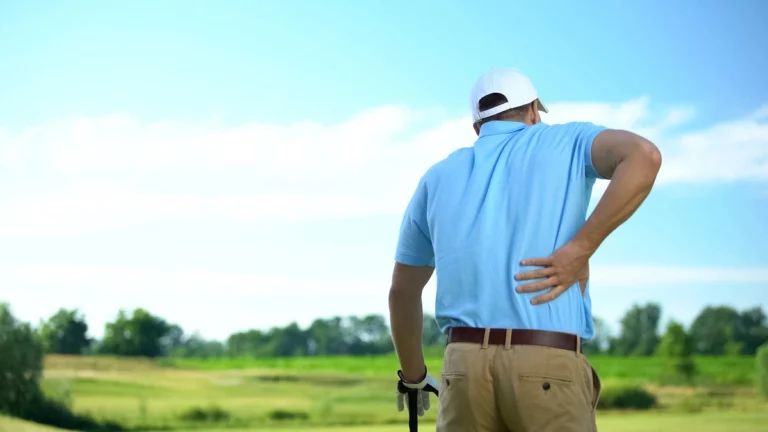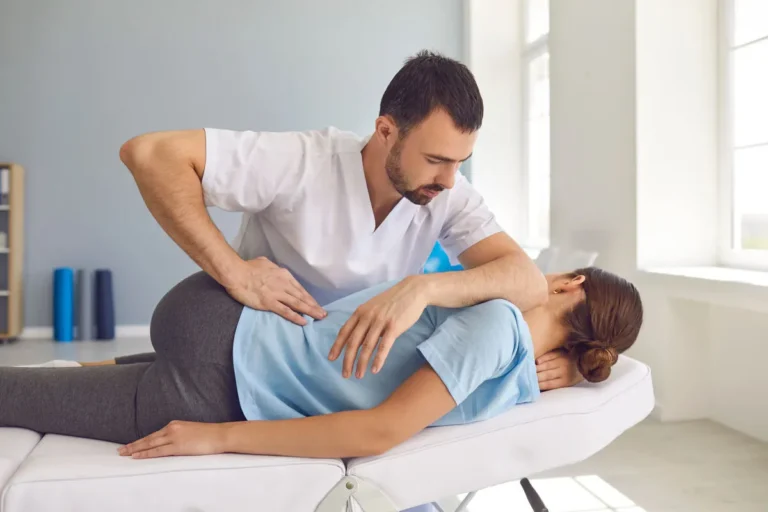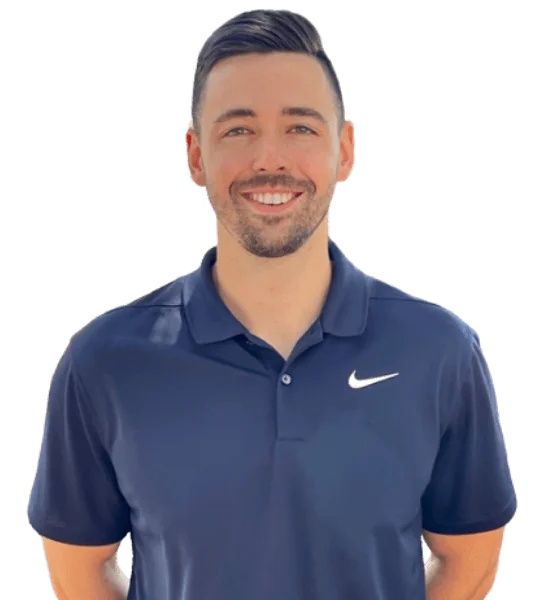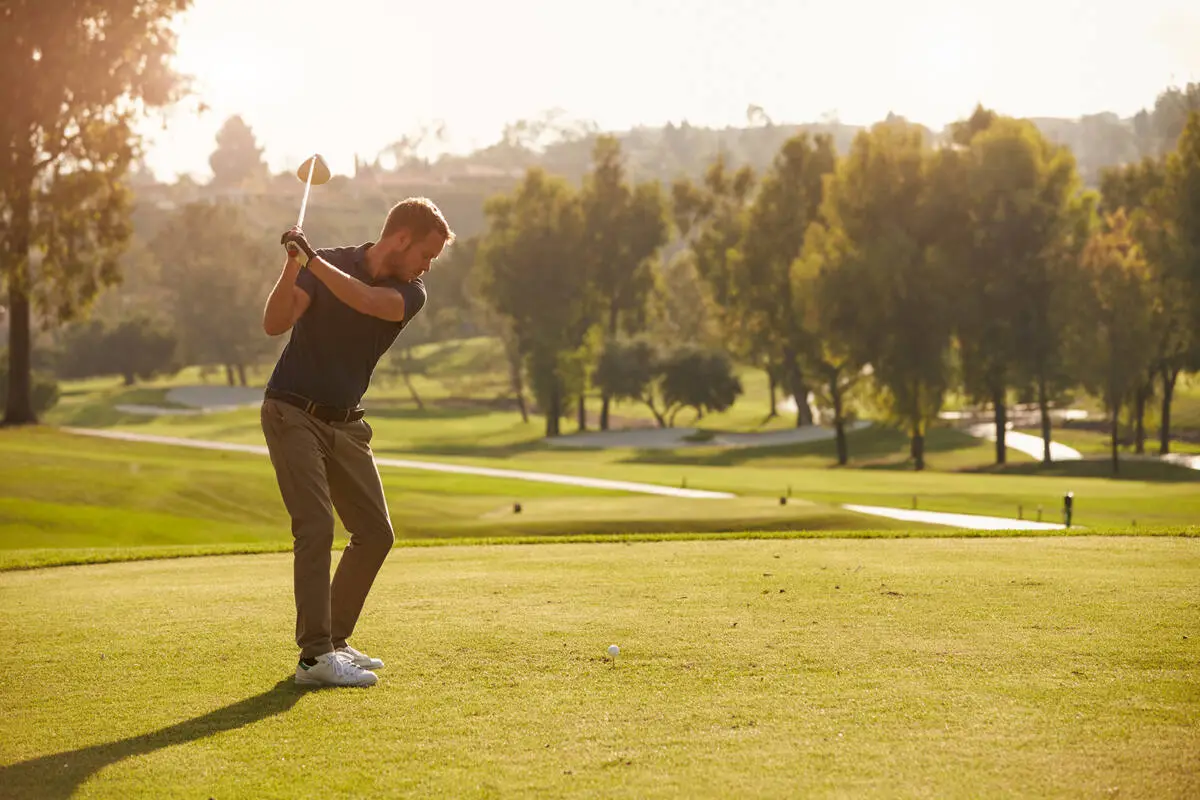
Introduction: The Golfer’s Unique Physical Demands
Golf is often perceived as a low-impact sport, but any active adult who’s spent hours on the fairway knows its unique and extensive physical demands. Every swing draws on a remarkable interplay of strength, flexibility, balance, and precision—all coordinated seamlessly for peak golf performance. However, these dynamic motions also expose golfers to a range of specific injury risks that require dedicated prevention and recovery strategies tailored to the sport.
The repetitive nature of the golf swing can place significant strain on the back, shoulders, elbows, and wrists. Common golf injuries include strains, sprains, and overuse syndromes, which can gradually develop without warning if muscle imbalances or limited mobility go unaddressed. While these injuries impact skilled athletes, they can also affect adults enjoying golf for recreation or staying active later in life. The focus on technique and repetitive movement patterns makes golf injury prevention vital to keep golfers at their best on and off the course.
This is where the role of specialized physical therapy becomes essential. Many golfers seek “Golf physical therapy near me” when they notice early stiffness or soreness, or after an acute injury disrupts their season. Physical therapists with expertise in golf can identify movement inefficiencies, help restore optimal function, and design individualized plans for ongoing care that address the physical demands of the sport. They work collaboratively with clients to promote resilience, reduce the risk of future injuries, and even enhance on-course performance with improved strength and mobility.
As the popularity of golf surges among adults seeking social, physical, and mental benefits, there’s a growing awareness of the importance of professional support for injury prevention and recovery. More golfers—from weekend warriors to competitive league players—are choosing clinics like Bull City PT that offer tailored services, advanced assessment tools, and holistic care designed for their unique athletic requirements. Whether you’re aspiring to shave strokes off your game or simply eager to play comfortably for years to come, integrating physical therapy as part of your golf performance routine is a proactive step in maintaining your health and maximizing enjoyment on the links.
Why Should Golfers Consider Specialized Physical Therapy?
Specialized golf physical therapy isn’t just for injury recovery; it’s a powerful tool for elevating your game. Through a deep understanding of golf’s biomechanics, certified therapists can help you adjust movement patterns, improve flexibility, and build strength in critical areas—all while prioritizing safety and long-term wellness. With preventive programs, individualized feedback, and sport-specific guidance, professionals ensure you can meet golf’s physical demands confidently and comfortably, every round.
What Is Golf Therapy?
Golf therapy is a specialized branch of physical therapy designed to address the unique movement patterns, muscle imbalances, and injury risks associated with playing golf. Unlike general physical therapy, golf therapy tailors evaluation and treatment plans to the physical demands and biomechanics of the golf swing, resulting in improved performance, faster golf rehabilitation, and reduced injury risk for active adults at all skill levels. Seeking care from therapists with golf physical therapy certification ensures you receive evidence-based interventions targeted to golfers’ particular needs.
How Does Golf Therapy Differ From Conventional Physical Therapy?
While conventional physical therapy focuses broadly on restoring general function after injury or surgery, golf therapy specializes in functional movement patterns critical to golf. This means every assessment and intervention—whether for pain, mobility, or stability—considers golf-specific mechanics. For example, a golf therapist evaluates not just range of motion, but also how movements integrate into your swing, stance, and follow-through. Therapy may involve golf swing assessments, video analysis, or even on-course sessions to ensure gains translate directly to better play and less risk of reinjury.
Golf Physical Therapy Certification: What Does It Involve?
Physical therapists who pursue golf physical therapy certification receive advanced training in golf biomechanics, injury prevention, and sport-specific rehabilitation. These certifications—often endorsed by reputable golf and sports medicine organizations—require in-depth study of swing analysis, typical golf injuries, exercise progressions, and adaptive strategies for players with limitations. By working with a certified golf therapist, you gain access to tailored expertise with a deep understanding of how your physical health impacts your game, and vice versa. At Bull City PT, our certified professionals collaborate with golf instructors and coaches to deliver comprehensive care for your recovery and performance goals.
Where Can You Access Golf Therapy, And Who Provides It?
Golf therapy can be found in outpatient clinics, sports medicine centers, and specialty facilities such as golf performance labs. Some therapists also offer on-site or virtual sessions, allowing for flexibility and individualized plans. It’s important to seek therapists with specific training or certification in golf therapy. Typically, licensed physical therapists or physical therapist assistants with a passion for golf lead these programs, often collaborating with golf pros or athletic trainers. At Bull City PT, our team is dedicated to providing top-tier golf therapy, bridging the gap between clinical care and on-the-course performance. Whether you’re aiming to recover from injury, prevent future setbacks, or simply elevate your swing, golf therapy is a smart and encouraging next step in your athletic journey.
What Are The Most Important Muscles For Golfers?
Golfers depend on a harmonious blend of strength, stability, and flexibility to execute powerful and consistent swings while avoiding injury. The core muscles, including the abdominals, obliques, and back extensors, are foundational for a repeatable swing and injury prevention. Equally crucial are the upper body muscle groups—shoulders, rotator cuff, and forearms—for controlling the club and managing impact forces, while the lower body, composed of the glutes, hips, and legs, drives rotation and stabilizes the body throughout the game. A balanced focus on all these golf muscle groups is vital not only for enhanced performance but for effective injury recovery and long-term fitness.
The Role Of Core Muscles In Golf Performance
The core acts as the body’s powerhouse and is responsible for the rotational strength required for an efficient golf swing. A stable core aids in transferring energy from the legs through the upper body and eventually to the clubhead with each shot. Engaging the abdominals and obliques through golf physical therapy exercises like planks, rotational twists, and bridges can help you maintain posture and prevent compensatory movements that often lead to back pain or strain. Targeted training of the back extensors and deep core stabilizers—often overlooked by golfers—anchors your spine and supports efficient weight transfer, making your swing both powerful and repeatable.
Upper Body: Shoulders, Rotator Cuff, And Forearms
Your shoulders and rotator cuff muscles absorb and control the forces experienced at impact, while enabling a full range of motion in your backswing and follow-through. Forearms add grip strength, ensuring clubface control. Incorporating resistance band external rotations and forearm strengthening into your routine not only protects these golf performance muscles from golfer’s elbow and shoulder impingement, but also helps you sustain shot accuracy through long rounds. Consistent activation and stretching for these areas are key to maintaining a fluid and injury-resistant swing.
Lower Body Strength: Glutes, Hips, And Legs
Don’t underestimate the importance of a strong lower half. Golf relies on force generation from the ground up—the power in your swing starts from your feet and moves through your glutes and hips. Exercises like squats, lunges, and hip bridges help build functional strength for optimal rotation and stability. Strengthening the lower body also minimizes the risk of compensation injuries elsewhere, such as the lower back or knees, especially as the season progresses.
Why The Pelvic Floor Matters In Golf
While often associated with pelvic health, the pelvic floor is essential for golfers. It forms the base of your core and contributes to stability and force control during dynamic movements. Specialized approaches like Sutter pelvic floor physical therapy can address imbalances or weaknesses in this area, enhancing balance and coordination for a stronger, more dependable swing. If you are experiencing core or hip instability, discussing pelvic floor assessment with your Bull City PT therapist may be beneficial.
Why Balanced Muscle Strength Matters In Golf
Golf is a repetitive sport, and over-emphasizing certain muscle groups while neglecting others can lead to overuse injuries or imbalances that hinder performance. Your personalized golf physical therapy exercises program should address all major and supporting muscle groups, allowing you to move efficiently and protect against strain. Bull City PT’s focus on whole-body health empowers active adults to enjoy optimized golf fitness, better scores, and quicker injury recovery. A holistic approach ensures you’re not just playing now, but you’re set up for a lifetime of active golf—stronger, more resilient, and pain-free. Remember, every muscle matters, and your commitment to balanced strength will pay off on the green!
Common Golf Injuries And How Physical Therapy Helps
Golf is a sport that demands a surprising degree of repetitive movement, flexibility, and core strength, which puts golfers at risk for certain injuries unique to the game. Thankfully, with the right approach and resources, nearly all common golf injuries can be effectively rehabilitated—and even prevented—with thoughtful intervention. Bull City PT is here to guide you through the process, so you can keep enjoying your rounds and stay on top of your game.
What Are The Most Frequent Golf Injuries?
The most common golf injuries include golfer’s elbow (medial epicondylitis), lower back pain, rotator cuff strains in the shoulder, and knee pain. Golfers may also suffer from wrist sprains, hip flexibility issues, and even foot and ankle injuries. These injuries are often the result of poor swing mechanics, overuse, lack of flexibility or strength, or underlying musculoskeletal imbalances.
How Does Physical Therapy Aid In Golf Injury Recovery?
Physical therapy is a cornerstone of effective golf injury recovery. At Bull City PT, we take a comprehensive approach: our therapists tailor rehabilitation programs to each individual, blending manual therapy, therapeutic exercise, mobility and flexibility training, and education on proper swing mechanics. The goal is not only to relieve pain and restore movement, but to identify-and correct—the root causes of the injury, reducing the risk of recurrence.
For example, someone experiencing golfer’s elbow will benefit from a combination of hands-on soft tissue work, targeted stretching, strengthening exercises for the forearm and grip, and modifications to their grip or swing. Lower back injuries, another frequent complaint, are addressed with core stability exercises, hip mobility drills, and ergonomic training both on and off the course.
What Are Early Signs Or Symptoms Golfers Should Watch For?
It’s crucial to pay attention to warning signs—such as persistent soreness, sharp pain during or after play, decreased range of motion, joint instability, or muscle weakness. Ignoring these symptoms can lead to more significant injuries that may sideline you from the sport you love. Don’t wait until the pain becomes chronic; early intervention with a golf physical therapy near me search can make all the difference in swift recovery and long-term health.
What Does A Customized Rehabilitation Protocol Look Like For Golfers?
At Bull City PT, every golfer receives an individualized care plan based on their unique movement patterns, fitness level, and goals. A customized protocol may include hands-on manual therapy, modalities such as heat or ice, personalized strengthening and stretching exercises, balance and coordination drills, and education on safe return-to-play strategies. Your therapist may also evaluate your swing technique and work with your coach to implement lasting changes that promote healthy movement and optimal performance.
Remember, professional help is never far away—searching for “Golf physical therapy near me” is the first step toward knowledgeable, supportive care for every golfer. With proactive attention, tailored rehabilitation, and thoughtful injury prevention, you can return to—or even improve upon—your best level of play with confidence.
Does Physical Therapy Work For Golfers’ Elbows?
Physical therapy is highly effective for treating golfers’ elbow (medial epicondylitis), offering both symptom relief and long-term functional improvement. By using a combination of hands-on techniques, targeted exercise, and education, physical therapists address pain, inflammation, and the underlying mechanical issues that contribute to this condition. Successful rehabilitation through dedicated golf physical therapy not only alleviates discomfort but also supports a safe and confident return to your game, reducing the risk of recurrence in the future.
Understanding Golfer’s Elbow And Why It’s Common In Golfers
Golfer’s elbow is a repetitive-use injury characterized by pain and tenderness on the inside of the elbow, where the forearm muscles attach to the bony prominence (medial epicondyle). While its name references golf, it can affect anyone who performs activities that require repetitive wrist flexion or gripping—both of which are fundamental to the golf swing. The high demand placed on the forearm flexors during gripping and swinging, particularly if technique or muscle strength is lacking, makes golfer’s elbow a prevalent issue among both casual and committed golfers alike.
How Does Physical Therapy Help Treat Golfers’ Elbow?
Through golf physical therapy, customized treatment plans address the unique needs of each golfer. Your therapist will typically begin with pain relief strategies such as manual therapy (hands-on soft tissue and joint mobilization), anti-inflammatory modalities (like ice or ultrasound), and gentle stretching. As pain subsides, the focus shifts to strengthening the forearm, wrist, and grip muscles, along with addressing any deficits in shoulder or scapular stability. Correcting biomechanics and improving swing technique (in partnership with a golf pro, if needed) can also help reduce ongoing stress on the tendon. This multi-faceted approach ensures not just healing, but a sustainable return to play.
What Techniques And Modalities Are Used In Elbow Rehabilitation?
Common components of elbow rehabilitation for golfers include manual therapy (massage, soft tissue mobilization), progressive resistance exercises using bands or light weights, and the application of modalities such as ice, ultrasound, or electrical stimulation to manage inflammation. Therapists may incorporate stretching routines, eccentric strengthening for the wrist flexors, and even dry needling where appropriate. A crucial aspect is education on activity modification, proper warm-up, and pacing to avoid reinjury. At Bull City PT, your progress is closely monitored, and the program is adjusted as needed to keep you on track for a healthy and strong comeback.
How Can Golfers Prevent Golfer’s Elbow From Returning?
After a successful recovery, maintaining your elbow health is key. Physical therapists provide practical tips tailored to each individual, such as grip adjustments, gradual return-to-play protocols, and ongoing exercise routines for forearm and shoulder strength. Consistent attention to flexibility, using proper equipment, and integrating prescribed exercises into your regular warm-up can dramatically reduce the chance of recurrence. Don’t wait for pain to return—staying proactive means your time on the course will be enjoyable and injury-free.
Remember, you don’t have to play through the pain. Golf physical therapy at Bull City PT empowers you with the care, support, and knowledge needed for true elbow rehabilitation—and a confident swing for years to come.
Golf Physical Therapy Exercises To Enhance Performance
Incorporating golf physical therapy exercises into your routine is one of the most effective strategies for enhancing performance, increasing flexibility, and preventing injuries on the course. These exercises are designed specifically for the physical demands of golf, targeting areas that are essential for a powerful, controlled swing. By working on mobility, strength, and stability, you can not only improve your game but also feel stronger and more resilient round after round.
How Do Specific Exercises Improve Golf Performance?
Targeted golf strength training and mobility exercises are crucial because they address the unique movement patterns of golf. Exercises that mimic the golf swing, improve rotational strength, and enhance flexibility help golfers generate more clubhead speed and maintain proper form throughout all 18 holes. Consistent physical therapy exercises also aid in correcting muscle imbalances and reducing compensatory movements, which are common sources of pain and injury for active adults.
What Are The Best Stretches For Golfers?
Golf stretching routines should focus on the shoulders, hips, spine, and hamstrings. Dynamic warm-ups such as torso rotations, shoulder circles, and hip swings help prepare your body before you play. After your round, static stretches like spinal twists, hamstring stretches, and child’s pose can release residual tension. Stretching both before and after golf can improve swing fluidity and prevent stiffness—something every active golfer can appreciate.
How Can Core Stabilization Drills Help My Swing?
A strong and stable core provides the foundation for a powerful, repeatable swing. Drills such as planks, Russian twists, and bird dogs challenge your core stabilizers, promoting better balance and controlled rotation. Core stability prevents excess stress on the lower back—a frequent injury site for golfers—and enables you to consistently transfer force from your legs through your trunk and into your arms.
Why Is Pelvic Floor And Hip Mobility Important For Golfers?
Pelvic floor strength and hip mobility are often overlooked, but they are key to optimal torque and power. The hips generate the bulk of your swing’s speed, while the pelvic floor provides stability and helps protect the lower back. Exercises such as clamshells, hip bridges, and pelvic tilts—often included in advanced therapy like Sutter pelvic floor physical therapy—facilitate smoother weight shifts and less rotational restriction throughout your swing.
How Can I Fit These Exercises Into My Golf Practice Routine?
Integrating golf physical therapy exercises into your schedule is simple with a balanced approach. Spend 5-10 minutes on dynamic stretches before practice, and dedicate two to three sessions per week to strength and mobility routines. Try sample routines like alternating planks and hip bridges for core stability, followed by targeted stretching. When in doubt, Bull City PT can customize a program that’s seamless, effective, and easy to fit into any active golfer’s lifestyle.
What Is The Best Recovery For Golfers?
The best recovery for golfers is a well-rounded approach that includes adequate rest, individualized golf recovery routines, and supportive therapies designed to address both immediate fatigue and long-term musculoskeletal health. Key components involve not only physical rest, but also active interventions such as tailored physical therapy, hydration, nutrition, and therapeutic modalities to help restore optimal function. By incorporating these elements, golfers can accelerate recovery, reduce the risk of injury, and prepare more effectively for their next game or session.
Why Are Rest And Recovery Routines Crucial For Golfers?
Rest and structured recovery are vital for maintaining peak performance and reducing overuse injuries. Unlike many other sports, golfing often involves repetitive swings, walking long distances, and sometimes playing multiple rounds in a short period—all of which can cause muscle fatigue and strain. Implementing dedicated recovery routines that include rest days, gentle mobility exercises, and deep muscle relaxation can help the body repair and adapt, leaving you feeling refreshed and ready for future play.
Role Of Physical Therapy In Post-Round And Post-Injury Recovery
Engaging with a specialized provider like Bull City PT for golf physical therapy near me can make a profound difference in how quickly and effectively you recover after playing or after an injury. Physical therapists can assess movement patterns, identify muscle imbalances, and teach targeted stretches and exercises to relieve soreness, enhance blood flow, and support tissue repair. For post-injury recovery, therapy is critical for safe and structured rehabilitation—getting you back on the course with confidence while minimizing re-injury risks.
Hydration, Nutrition, And Sleep: The Unsung Heroes Of Golf Recovery
Staying well-hydrated and consuming nutrient-rich foods support tissue healing and energy restoration. After a round or intense practice, prioritize drinking water or electrolyte-rich fluids, and refuel with meals rich in lean protein, complex carbs, and antioxidant-packed fruits and vegetables. Quality sleep is equally essential, as it’s during restful sleep that most muscle repair and adaptation occur. Prioritizing seven to nine hours per night is recommended for active adults seeking peak performance.
Using Recovery Modalities: Ice, Heat, Massage, And Dry Needling
Recovery modalities offer excellent support for both general restoration and injury-specific care. Applying ice can help reduce post-round inflammation, while heat supports muscle relaxation and flexibility pre-session. Regular massage or professional manual therapy can ease tightness and speed up recovery, while advanced modalities like dry needling (offered by many physical therapists) are highly effective for relieving persistent muscle knots and improving blood flow. Consult your PT to determine which techniques will benefit you most based on your routine and unique needs.
How To Find Golf Physical Therapy Near Me
If you’re ready to optimize your recovery routine, seeking out local, specialized care is a smart first step. Look for clinics with certified golf physical therapists, positive reviews from golfers, or specific programs tailored to golf recovery and performance. At Bull City PT, we’re proud to offer comprehensive evaluation and golf recovery strategies, providing both in-person and virtual support for active adults. Book an assessment to find out how a personalized approach can help you play your best, feel your best, and stay resilient round after round.
Choosing A Certified Golf Physical Therapist
Finding the right support on your recovery and performance journey as a golfer can make all the difference. Selecting a certified golf physical therapist provides peace of mind that you’re working with someone who truly understands the unique biomechanics and demands of the sport. Their specialized training enables them to tailor rehabilitation, injury prevention, and performance enhancement strategies to your individual needs, helping reduce downtime and improve long-term results both on and off the course.
Why Does Certification Matter For Golf Physical Therapy?
A Golf Physical Therapy certification signifies advanced education and proven competency in evaluating and treating golf-related injuries and movement patterns. Certified golf therapists have in-depth knowledge of golf swing mechanics, common overuse injuries, and specific exercise progressions necessary for both recovery and improved performance. This special qualification ensures your care goes beyond general athletic rehab, focusing instead on the demands and goals of golfers like yourself. With Bull City PT, our certified professionals bring targeted expertise, giving you a crucial edge in healing and performance.
What Qualities Should You Look For In A Golf Therapist?
In addition to certification, an excellent golf therapist should demonstrate effective communication, a thorough assessment approach, and genuine enthusiasm for both the sport and your well-being. Look for someone who asks detailed questions about your typical play, past injuries, and goals—whether it’s pain relief, increased drive distance, or a safe return to competition. Experience with golfers of various skill levels (from newcomers to seasoned athletes) is another plus. Don’t hesitate to request testimonials or ask for their plan for integrating therapy with your ongoing training or competition schedule.
How Does Local Expertise Enhance Your Recovery?
Accessing golf physical therapy near me offers significant benefits beyond simple convenience. Local therapists, like those at Bull City PT, often have relationships with area golf pros, fitness trainers, and medical providers, creating a collaborative recovery network that meets your evolving needs. In the event you need advanced care, such as Sutter pelvic floor physical therapy, a local therapist can efficiently coordinate referrals, ensuring every aspect of your recovery is managed with seamless teamwork. Being in close proximity also simplifies regular follow-up visits, enhancing your consistency and progress.
When Should You Seek Integrated Care Or Referrals?
Sometimes, your physical needs extend beyond what a single therapist can address, especially if you experience issues like pelvic floor dysfunction, chronic pain, or performance plateaus. In these cases, a certified golf therapist will know when and how to refer you for integrated care, which could include specialists in sports medicine, orthopedic care, or pelvic floor therapy resources such as Sutter pelvic floor physical therapy. This holistic approach helps resolve deeper movement issues, expedites recovery, and maximizes your improvement both on the course and in daily life. At Bull City PT, integrated care is part of our commitment to your whole-body health and lasting success.
Conclusion: The Value Of Physical Therapy For Every Golfer
Whether you are a seasoned golfer, a weekend enthusiast, or just beginning to enjoy the game, understanding the full value of golf physical therapy is key to unlocking your potential on the course. Investing in golf rehabilitation and targeted therapy not only addresses acute injuries and pain but also supports a proactive approach to building a stronger, more resilient athletic foundation. As we’ve explored throughout this guide, physical therapy tailored for golfers goes beyond recovery—it’s a path to ongoing golf performance, injury prevention, and longevity in the sport you love.
What Are The Long-Term Benefits Of Physical Therapy For Golfers?
The ongoing benefits of working with a specialized therapist span well past immediate injury recovery. Long-term, golfers who engage in regular therapy enjoy better muscle balance, improved joint mobility, and greater efficiency in their swing mechanics. This results in enhanced consistency on the course, fewer flare-ups of common golf injuries, and often, improved performance thanks to a body that moves optimally and pain-free.
Additionally, with the guidance of expert therapists, many golfers find they develop increased body awareness—learning how to recognize early warning signs before minor strains become major setbacks. This combination of acute care, education, and prevention strategies truly empowers golfers to enjoy the sport for years to come and reduces time away from the game due to injury.
How Can A Golfer Maintain Results After Rehab And Therapy?
Maintaining progress after rehabilitation is a critical part of the recovery process. Consistency in following home exercise routines, incorporating stretches and mobility work, and periodically checking in with your therapist are all best practices. Many patients continue with a blend of self-guided function-specific exercises and periodic in-person sessions to ensure their bodies stay well-tuned and adaptable as their golf practice evolves.
Equally important is listening to your body and adjusting your workload as needed. Building a trusted relationship with a nearby physical therapy team, such as seeking out golf physical therapy near me, allows you to address issues early, receive ongoing coaching, and respond proactively to any changes in pain or performance.
When Should A Golfer Seek Professional Support For Golf-Related Pain Or Performance Issues?
If you notice persistent discomfort when golfing, changes in your range of motion, recurring aches after play, or a decline in your usual form, it’s time to consult a professional. Physical therapists trained in golf rehabilitation are uniquely equipped to assess movement patterns, pinpoint problem areas, and formulate effective solutions that are specific to golf.
Early intervention often leads to faster recovery and prevents small issues from escalating. Don’t wait for an injury or limitation to hold you back from the activities you love. Whether you’re aiming to return from injury, improve your swing, or simply keep playing pain-free, specialized physical therapy is a smart, supportive investment in your golf journey.
At Bull City PT, we believe every golfer deserves the chance to play at their best—pain-free and confident. Our expert team crafts individualized rehabilitation and performance programs that fit your schedule and goals, ensuring you stay strong, agile, and ready to take on every round. Choose Bull City PT as your partner on and off the course, and experience first-hand how results-focused care can revitalize your love of golf and support your healthiest, most active lifestyle yet. Book an appointment here!



